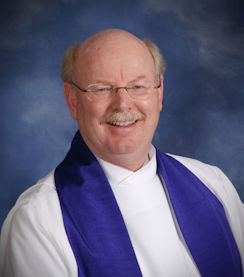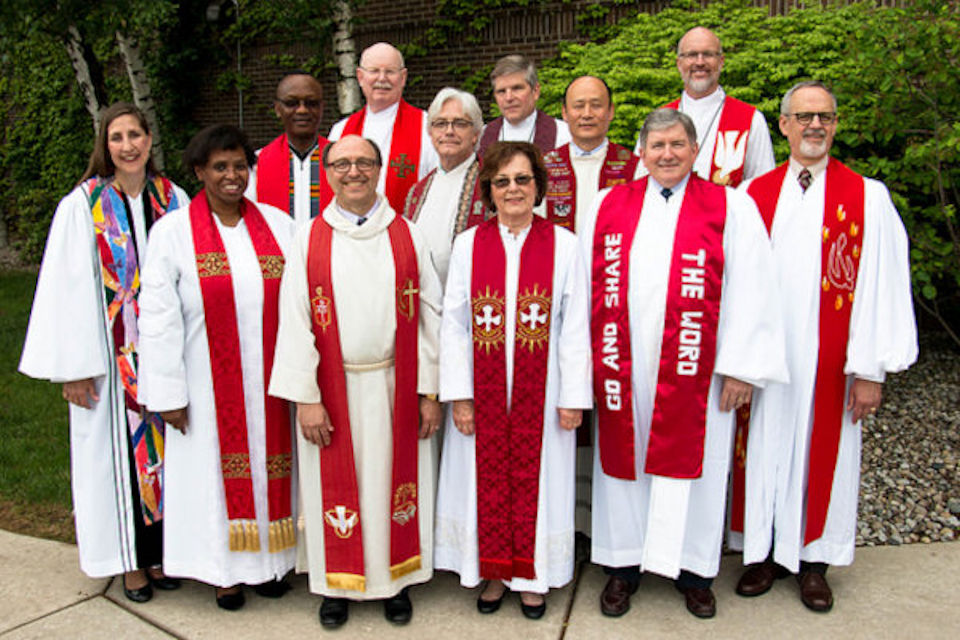The Appointive Cabinet just finished a week-long retreat. Clergy Assistant John Boley reflects on the trends, challenges, joys and realities of the appointment making process.
REV. JOHN BOLEY
Clergy Assistant to the Bishop
 Recently, Kay DeMoss and I were chatting about changes in the environment surrounding itineracy and the appointive process in our beloved United Methodist Church. Kay asked me to write a blog or two on these changes.
Recently, Kay DeMoss and I were chatting about changes in the environment surrounding itineracy and the appointive process in our beloved United Methodist Church. Kay asked me to write a blog or two on these changes.
So I’m writing this after completing our Appointive Cabinet retreat last week in which we started the annual season of appointments again. It is rewarding to be with the Bishop and Cabinet colleagues around the table. Appointment making is a privilege and a challenge for all of us.
Here are some trends, challenges, joys, and realities. Much of this will be obvious to those who follow these matters, however, for many who for whatever reason don’t often look beyond their local church, it might be beneficial to point these out.
Creeping Congregationalism: As time goes on, there seems to be an increase in congregational mentality. (A polity of congregational control rather than connectional dynamics). Especially as more members and leaders of congregations come from non-United Methodist backgrounds, church leadership grasp of itineracy and the appointive process is lessened, and more leaders tend to adopt desires of the congregational model – candidating and hiring their own pastor, interviewing them, setting compensation packages regardless of the Conference requirements and recommendations, etc. This trend is also, in part, culturally driven – following common business practices instead of historical denominational practices. It is great that there is a passion for leadership, but it is an educational challenge to support connectionalism above congregationalism. This places more stress on the appointive process.
Demographic Shifts: It is no secret we are deployed on a model from the late 1800s and early 1900s, when we wanted a church within a three-hour horse and buggy ride of everyone. That is why we have saturated some rural areas, with a church in every town or crossroads. It was a great plan 100 years ago. It is now a disconnect due to major population shifts from rural areas to urban areas. So we have a challenge filling the pulpits of so many rural congregations, which tend to be smaller and demographically challenged. Don’t get me wrong, many of these congregations are doing great ministry. But it is still a disconnect, and an appointment challenge as the demographic trends continue.
Financial Pressures:
- Two-Tiered Dynamics: At times it appears that we have a two-tiered system. One tier is for appointments where salaries have increased over time and where housing allowances are often available. And the second tier is for congregations where the salaries have flat-lined and who can’t afford housing allowances. Being fair to all congregations and clergy in this two-tiered system adds another dimension to appointment making – making the jigsaw puzzle more difficult.
- Pastoral Costs: Even with flat-lined salaries in many congregations, overall pastoral costs are increasing all of the time. As everyone is acutely aware, this is particularly true related to health care costs. It results in more congregations seeking out part-time or retired pastors to serve them or requesting a pastor that does not need health care. The desire to reduce health care costs is often the driving factor in making an appointment. It sometimes means that the best pastor for the appointment is not available because the pastor’s requirements don’t match the congregation’s financial abilities.
- Giving Patterns: There are fewer people in our congregations giving more dollars toward church budgets. On the one hand, this is good stewardship as more people work toward tithing. But of course there are limits, and at some point, the same individuals will not give more. And many congregations are only one death away from being unable to continue their ministry. This places increased stress on pastors and makes appointments more critical. The fragility of some of these congregations means that the pastoral match is more critical than ever.
Horizontal Ladders: Once upon a time, the system was well set up for clergy, who were almost always Elders, to rise up the ladder in a long career going to larger and larger congregations. Even though there is an increasing salary differential, the ladder has moved from vertical to horizontal. Lateral moves are more likely now than in the past. And that is not a reflection of the capabilities of pastors, it is a reflection of the compression of congregations – fewer numbers of large churches and more churches with level or declining growth. This puts pressure on the appointive system as there are fewer opportunities to step up effective pastors into larger congregations.
Despite all of these challenges, the Bishop and Cabinet do their very best to match the gifts and graces of pastors with the needs of congregations. The process is prayerful and deliberative. All things considered, it works remarkably well. And certainly better (from my vantage point) than congregational / call systems. And through it all, we trust in the power of the Holy Spirit to correct, guide and inspire. Thanks be to God.
In my next blog, I will look at appointive issues surrounding: Re-Alignments and Cooperative Ministries; Clergy Stress and Health; Tethers; Elder to Local Pastor Dynamics; Societal Polarization; and Consultation and Reconsiderations.
Last Updated on September 21, 2022

